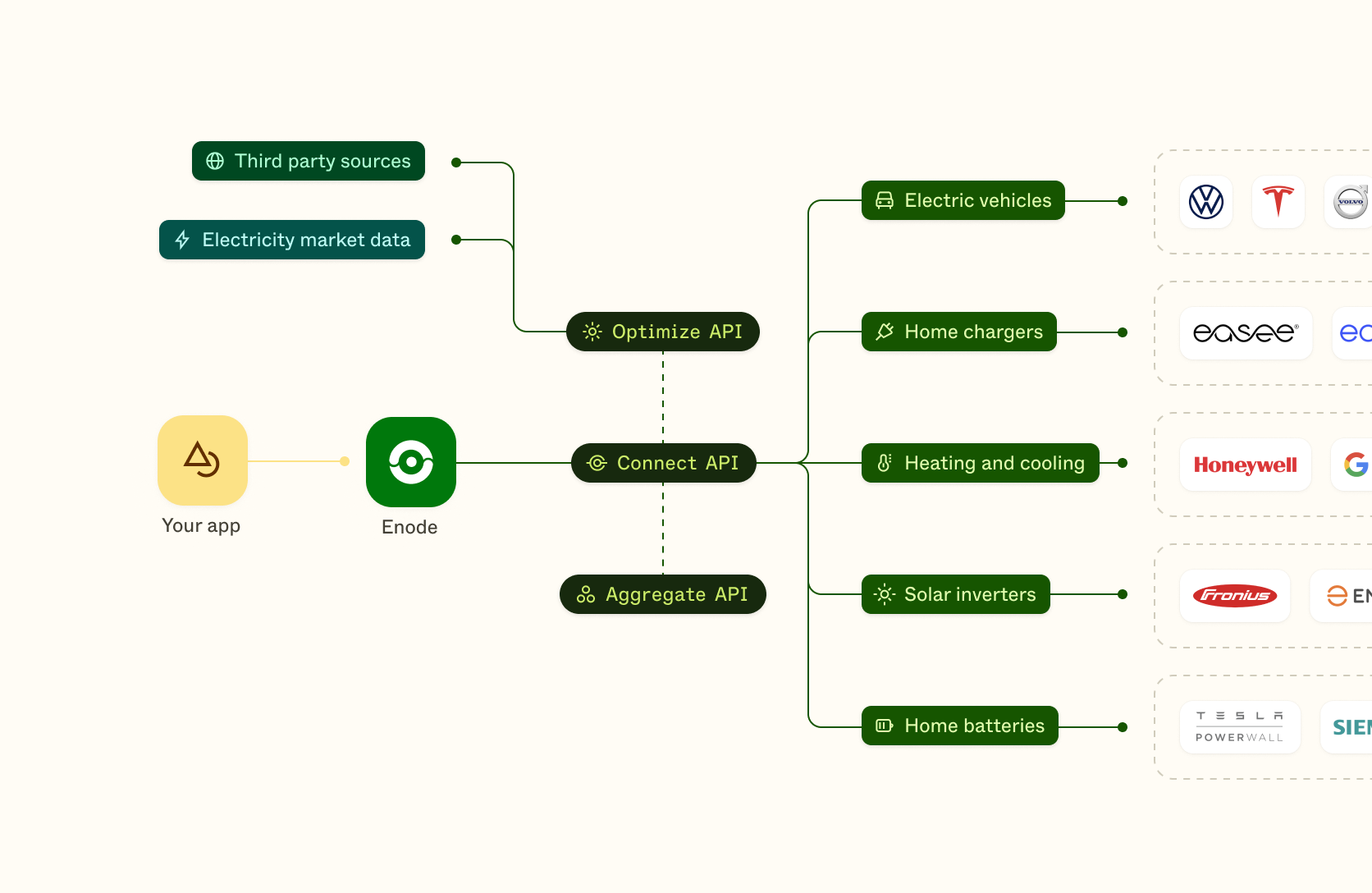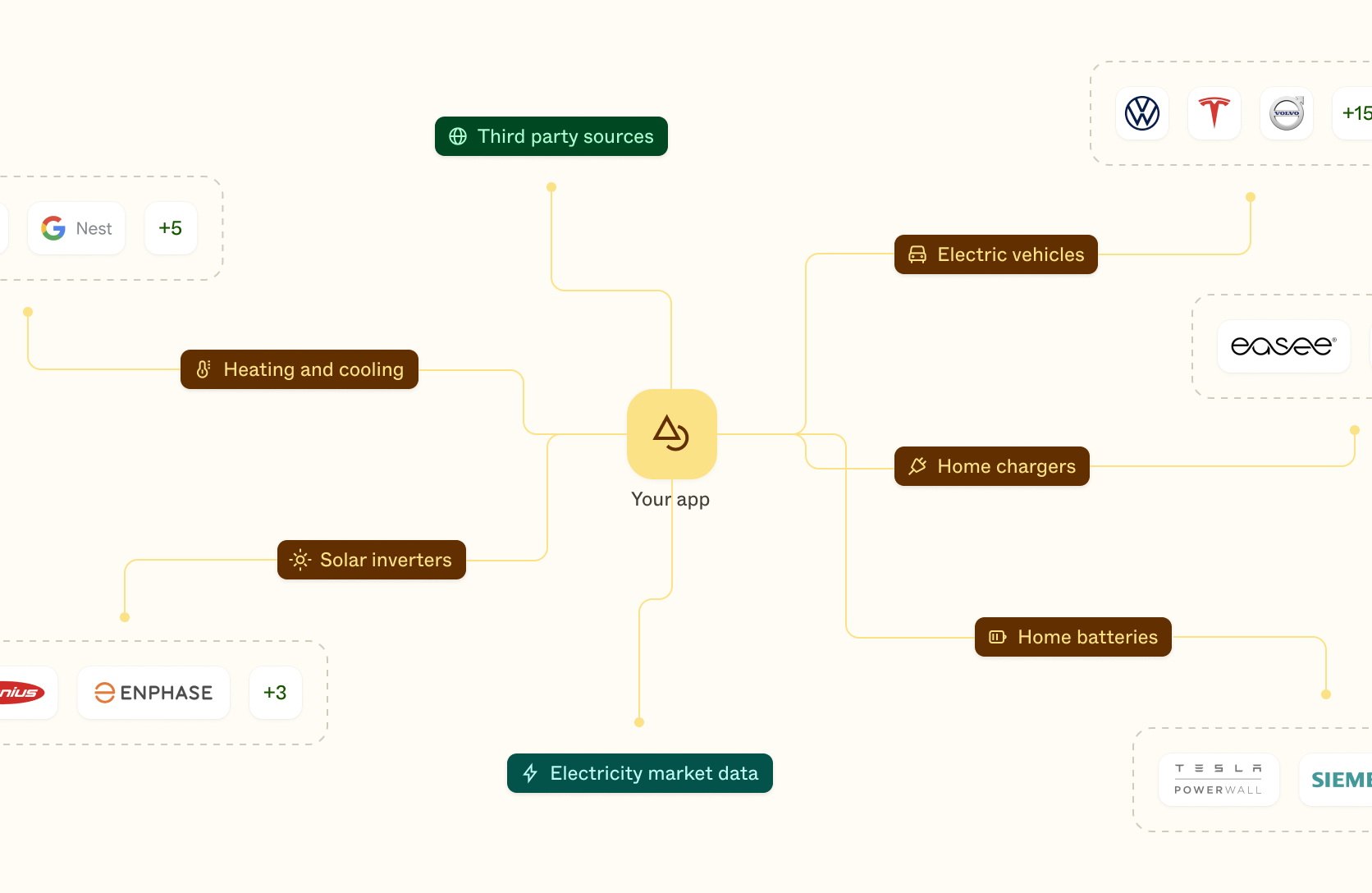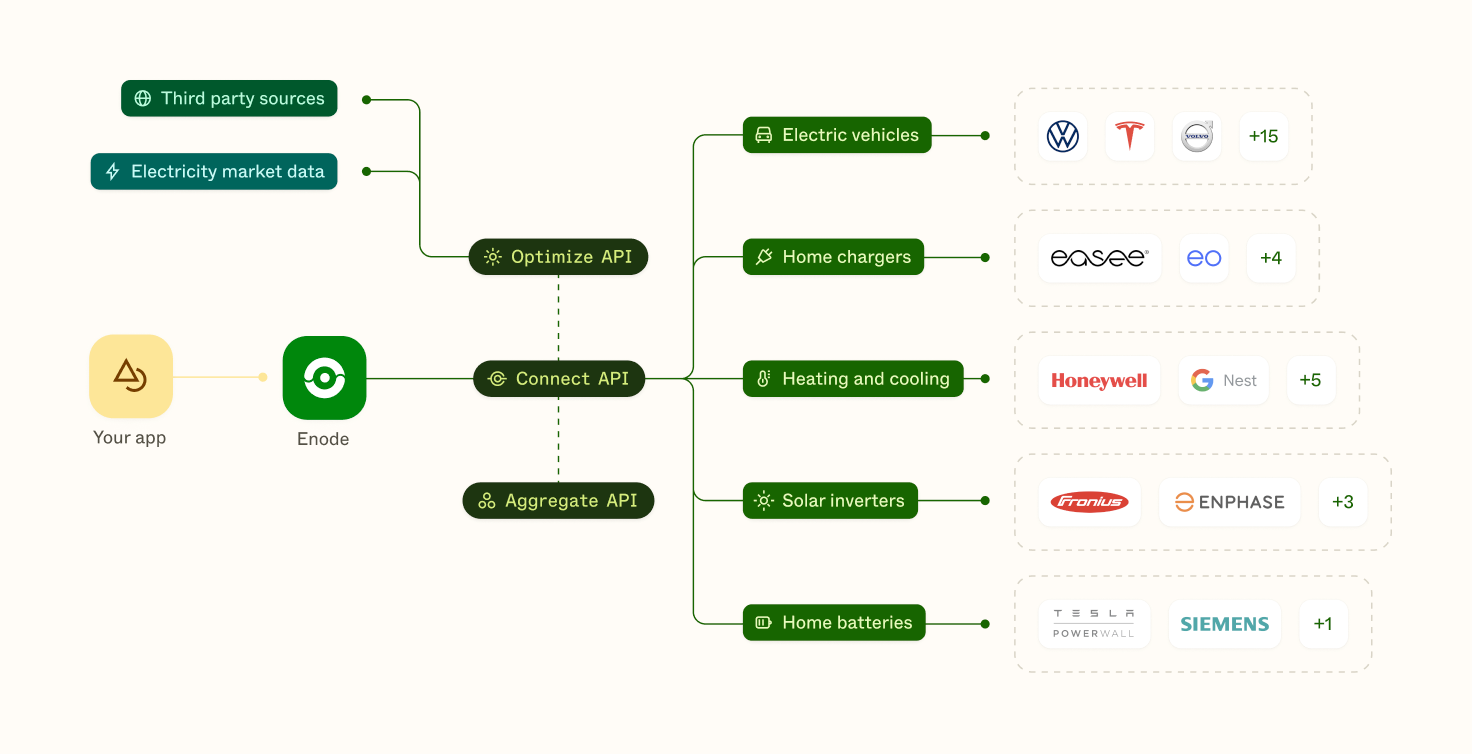The complete guide to Distributed Energy Resources Management System (DERMS)

Distributed Energy Resource Management System, or DERMS for short, is an important part of our sustainable energy future. But before diving into all of the technical of DERMS, let's take one step back to see how this system fits into the broad picture of a zero-carbon energy system.
Over the last 10 years, it has become crystal clear that a sustainable energy future depends on full electrification and renewable energy supply. Electrification of our cars and homes leads to a large increase in the demand for electricity. At the same time, the new energy supply from wind and solar is highly intermittent, making it more difficult to deliver consistently on the energy peaks produced by electrification.
The good news is that there is also an opportunity here. And that is to activate all of the new energy hardware as part of a new, digital energy system, with some help from DERMSs and demand response. These technologies help balance energy supply and demand, making it possible to transition to a zero-carbon energy system without building out the grid for the highest peak loads. While at the same time increasing the mix of renewable energy. A solid win-win!
To be part of the demand response market you need to control a large energy load. This could be a Walmart with large HVAC installations or a fleet of EVs. In the latter case, when connecting to and controlling a large set of Distributed Energy Resources, like EVs, heat pumps, thermostats, or home batteries, you need a system that can assist in the coordination. That is what the Distributed Energy Resources Management System (DERMS) can do. Difficult acronym, but spelled out you can now pretty easily understand what it does - on a high level. But these are complex systems, so in order for you to get a deep understanding of what DERMS is and what it can do for you, we have created this guide.
In this guide, we will give you a full overview of the DERMS landscape, from what it is to how you can benefit from it and what to look for in a provider.
More specifically we will cover:
- What is Distributed Energy Resource Management System (DERMS)
- The best DERMS providers
- How to evaluate DERMS providers
- What is the next step on your DERMS journey?
What is Distributed Energy Resource Management System (DERMS)
A Distributed Energy Resource Management System (DERMS) is a software product that can connect to and control energy hardware such as electric vehicles (EVs), solar inverters, thermostats and more. DERMS are used by utilities and other energy companies to aggregate a large energy load for participation in the demand response market.
DERMS can be defined in many ways, depending on the use case and underlying energy asset. Common for all of them is the objective of bundling together energy assets as one entity and connecting them to the local or national demand response market. This process includes connecting to and controlling hardware, as well as aggregation and forecasting for the entire subset of energy hardware the DERMS is connected to.
Energy companies and utilities use DERMS in a variety of use cases, most often to engage consumers in a demand response program. In these programs, consumers can enroll their EV, thermostats or other DER, by connecting it to the DERMS. This can happen in a first-party app, like the Google Nest app, or a third-party app coming from e.g. the energy supplier.
The objective: More renewable energy and a stable grid
Common for all DERMS is utilizing energy hardware to balance the grid and make better use of renewable energy. The differences between different vendors, which we will look at in a minute, are still huge. Some are focused on C&I while others are built for residential DERs like EVs. Some can handle different hardware categories while others are specialized in just one. Some are fully integrated into the demand response market, while others partner with Voltus or Leap for that connection. These differences are something you need to consider when evaluating providers, based on the set of energy assets you want to utilize.
The full DERMS software stack
If we start by looking at the residential DER category, where DERMS are most popular today, the software can in general be split into three different parts.
1 — Connect to and control DERs
All DERMS need to be able to connect to and control some set of Distributed Energy Hardware (DERs), whether that be thermostats APIs, heat pump APIs, EV APIs, or other energy assets. As mentioned, some DERMS software can handle them all, whereas others are more specialized.
If we consider the C&I implementations for a second, this usually involves a hardware device installed on-premise. This can make sense as the load is large enough to recoup the investment. For the residential use case, it is now possible to collect data from and control most DERs, like EVs and thermostats, via a cloud-to-cloud connection. This makes it easy to scale DERMS software across a large set of consumers without any need for propriety devices installed in the house.
2 — Aggregate DERs to create a Virtual Power Plant (VPP)
Once you have your DERs connected, the next thing the DERMS needs to handle is aggregating them to increase the value. One residential thermostat is not enough to really create value from demand response. The real value comes from bundling thousands of them together and controlling them at the same time, which is a key part of any DERMS software. This type of process is also referred to as creating a Virtual Power Plant (VPP).
The objective is to analyze and determine the total available capacity for your DERs, that can be made available in the flexibility market. This will most likely fluctuate heavily thought the day and for different geographical areas, so a lot of DERMS also uses machine learning to train the models for more accurate output.
3 — Activate the VPP and report
When steps 1 and 2 are complete you are ready for the most important step, the activation of your VPP. This is also handled by almost all DERMS software we have analyzed, and basically means that you send e.g. a stop charing signal to ten thousand EVs at the same time.
This might sound simple, but many of the EVs, in this case, will not necessarily respond as you intend. This lack of response and activation needs to be part of your model, so you can accurately predict what flexibility you have available at all times.
When the activation is complete the final step is to report on the flexibility delivered. This is sometimes handled by the DERMS software, but in a few cases also the overarching demand response software platform.
Access to Distributed Energy Resources (DERs)
One question we often hear is where most energy companies and utilities find Distributed Energy Resources to connect to their DERMS. For the residential space, in our experience, the most viable way forward is to create a consumer-facing app that lets the user connect their own DERs to your DERMS. This can be both EVs, Solar Inverters, Heat Pumps, Thermostats, EVSEs and more.

The best DERMS providers
So now that we have covered what the DERMS is, let's turn our attention to the different providers out there. In this case, we have focused mainly on the US, as this is a mature demand response market with a large need for DERMS in the years ahead.
AutoGrid
AutoGrid is one of the most experienced players in the US DERMS market. They cover C&I and residential use cases across a broad range of DERs: EVs, solar, battery storage and more. They also have a complete demand VPP and DR offering to combine with the DERMS software they provide.
You can read more about their offerings here.
EnergyHub
EnergyHub’s grid-edge DERMS is built to be highly customer-centric and manage multiple DER classes at scale. The system is said to be a critical element of fully integrated, holistic utility planning and operations. EnergyHub has a specialization in EVs, making them the ideal choice for this use case.
You can read more about their offerings here.
Virtual Peaker
Virtual Peaker’s DERMS suite manages residential electric demand. It applies machine learning and real-time control to internet-enabled appliances to reduce demand while minimizing the negative impact on the residential customer. The platform connects in-home smart devices to run residential demand response programs that leverage distributed energy resources (DERs) to reduce cost and peak load.
You can read more about their offerings here.
Enode
Having worked on connections to DERs for several years now, we at Enode have entered into the DERMS market with a more specialized product. Our Aggregate product creates a VPP from all your connected DERs, making it ready for value capture in the demand response market.
You can read more about our DERMS solution here.

How to evaluate DERMS providers
Before you move forward with the DERMS provider of choice there are some things that are worth considering as part of the decision process. We have seen companies across industries make this choice and these are our learning.
Holistic or specialized
Not all DERs are created equal. Some are easier to work with and others and therefore many DERMS companies have chosen to specialize in just one asset. If you have a large fleet of EVs, it would make sense to choose a provider with an e-mobility focus. On the other hand, should you want to expand to EV chargers or home batteries, that switch might cause you to need several vendors. This is not ideal.
Based on the energy asset you have available and the knowledge and expertise your team possesses, it is good to assess whether you want to procure a holistic DERMS solution or build something more custom with specialized tools. You could also go for more specialized Virtual Power Plant Software or a broader Demand Response software.
C&I or Residential
The next consideration to make is whether you want software that focuses on C&I vs residential DERs that your DERMS will consist of. Many of the DERMS software providers have specialized in one direction for 5-10 years, making them excel in one category over another.
Price and revenue share
And of course, we cannot overlook the price, which can vary a lot between the DERMS vendors. Some DERMS providers are just that, software providers, with little extra hands-on support. Others are closer to consultancies, with integrations projects and continuous tech support along the way. Based on your internal knowledge and expertise you can assess what suits you best.
What is the next step on your DERMS journey?
To learn more about Distributed Energy Resource Management System (DERMS) we recommend talking to other experts in the industry. Some of the companies mentioned in this article will be able to add even more context before you decide. Talk to all of them and see what they have to offer.
If you want to learn more about DERMS and the opportunities in the space, here are some additional resources:
- A full guide to Distributed Energy Resources (DERs)
- A full guide to demand response software, a logical comparison to DERMSs
- This The Verge video on virtual power plants in cities.
